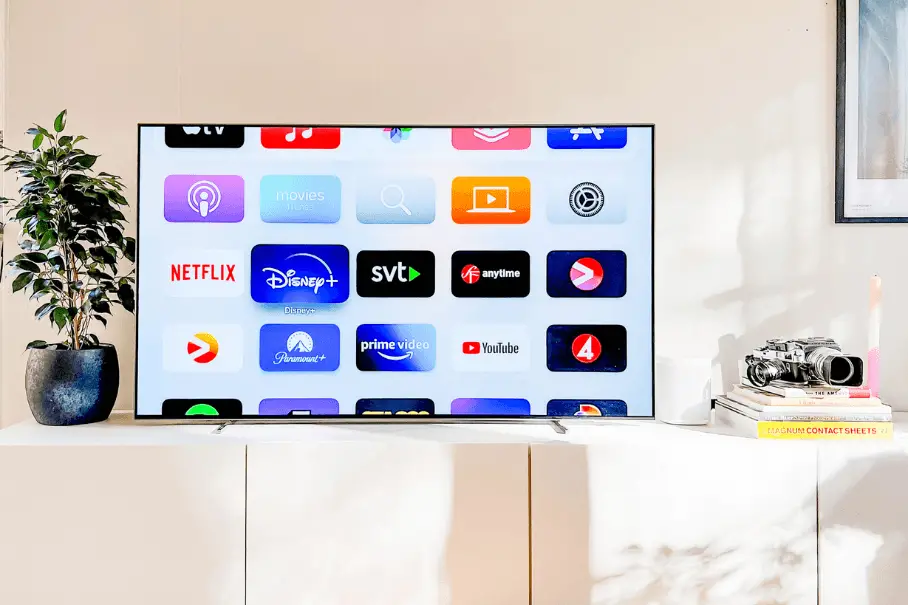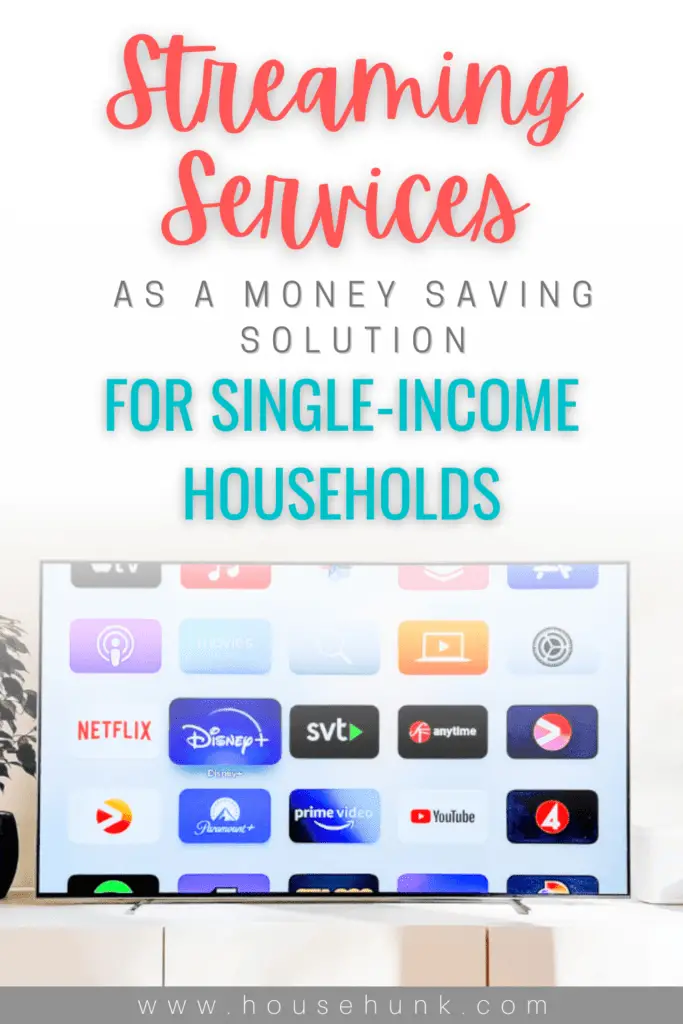This post may contain affiliate links. Please check our disclosure policy.
THE HIGH COST OF ENTERTAINMENT IN SINGLE INCOME HOUSEHOLDS
I will be the first to admit, sometimes I can be a little slow to adopt new technologies. I was pretty skeptical about cutting the cord on cable and switching over to streaming. I don’t know, maybe I was worried that I might miss something important that I could only find on my 5 different travel channels (of which I was watching none of them). But when I started looking at what we were paying for cable (almost $200/month) and the cost of , it all started to make total sense. Being a single income household can be challenging, especially when it comes to budgeting for entertainment expenses. Cable and satellite TV, movie theater tickets, and music streaming subscriptions can add up quickly and take a big chunk out of a household’s budget. However, with the rise of streaming services, there is now a more affordable option for entertainment that can help single income households save money.
HOW STREAMING PLATFORMS OFFER MORE AFFORDABLE ENTERTAINMENT OPTIONS
Streaming platforms, such as Netflix, , and Amazon Prime, offer a wide variety of TV shows, movies, and other content for a fraction of the cost of cable or satellite TV. Many of these services offer basic plans for as low as $8 per month, making it an affordable option for single income households. Additionally, these services often offer a free trial period, allowing users to test out the service before committing to a paid subscription.
COMPARING THE COST OF CABLE AND STREAMING SERVICES
THE VARIETY OF STREAMING SERVICES AVAILABLE FOR EVERY INTEREST AND BUDGET
One of the benefits of online streaming platforms is the variety of options available. From streaming TV shows and movies to live sports and music, there is something for everyone. Additionally, many of these services offer different plans at different price points, allowing users to choose the plan that fits their budget.
HOW TO MAXIMIZE SAVINGS BY BUNDLING STREAMING SERVICES
THE POTENTIAL TO CUT OUT ADDITIONAL COSTS SUCH AS DVRS AND PREMIUM CHANNELS
Streaming services also have the potential to cut out additional costs, such as DVRs and premium channels. With streaming platforms, users can watch their favorite shows and movies on-demand, eliminating the need for a DVR. Additionally, many streaming services offer a wide variety of content without the need for additional costly premium channels.
EVALUATE AND CANCEL UNNECESSARY STREAMING SUBSCRIPTIONS
As with any subscription service, it’s important to regularly evaluate and cancel any unnecessary streaming subscriptions. This can help single income households further reduce their entertainment expenses and stick to their budget. In our household, we will let a few seasons of a particular show stack up in a holding pattern and then get, say, the Paramount+ service and binge those seasons, and then cancel and circle back later.
THE IMPACT OF STREAMING PLATFORMS ON THE ENTERTAINMENT INDUSTRY
HOW STREAMING SERVICES CAN BE A PART OF A BUDGETING AND FINANCIAL PLANNING STRATEGY
Streaming services can be a valuable tool for single income households as they strive to meet their financial goals. By choosing more affordable entertainment options, households can free up more money for other expenses and for saving for the future. Additionally, by regularly evaluating and canceling unnecessary subscriptions, households can better control their entertainment expenses and stay within their budget.
RELATED: Cutting Grocery Costs: Strategies for Single Income Households







